Arctic Awakening review
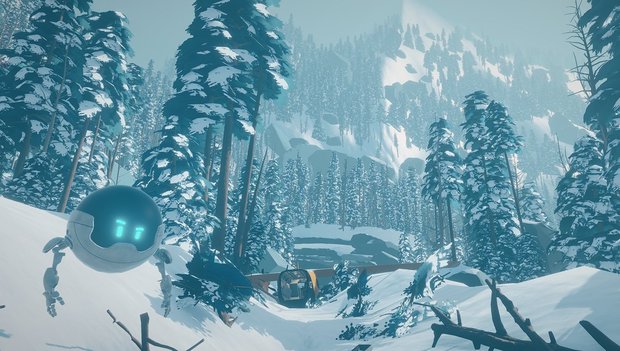
- 1 Comment
A walk through the northern wilds is a little too relaxed in a game that could do with a rousing pick-me-up
If you’ve played an adventure game in the past fifteen years, you’ve no doubt explored an abandoned town, abandoned house, abandoned space station, or abandoned office. You may even have been accompanied by an eager bot, a snarky bot, or a voiceless bot. If you’re tired of those, you’re in luck with Arctic Awakening, which sees you exploring abandoned research complexes with a therapy bot! I love these tropes all the same and was eager to dive into this walking simulator set in the chilly northern wilds. But while the game is competently made and has some definite highlights, I was mostly underwhelmed for the nine hours I spent with it due to some repetitive gameplay with little lore to keep things fresh.
Kai is piloting a small plane with his old war buddy Donovan, en route to a supply drop at a town east of Anchorage. Before they can finish making plans, the back of the plane mysteriously tears off, sending Donovan with it. The plane crashes, and while Kai is not seriously injured, an inhospitable storm and minimal rations threaten his life. Your job is to help Kai locate Donovan and find a way out of the wilderness.
Along for the ride is Alfie, your court-ordered therapy bot that also survived the crash. While the reason for this arrangement is not immediately clear, Alfie regularly reminds Kai that he must stay within so many feet so he can continue providing therapy for Kai’s pre-crash mental health issues despite their current life-and-death situation. Alfie is spherical—about the size of a basketball—with two arms. He has limited capabilities outside of therapy, however, so other than his ability to fly (slowly) and gather sticks for fires, he is mostly a thorn in Kai’s side.
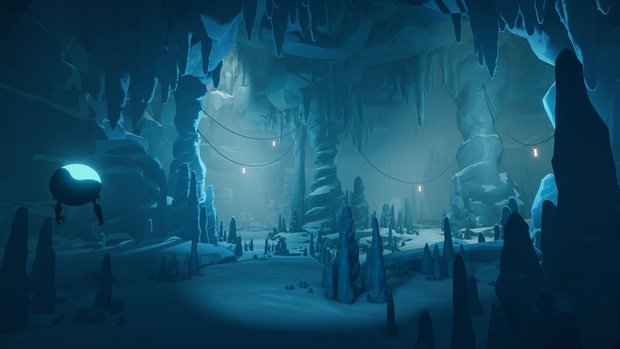
Play is in first person, with full three-dimensional movement using a gamepad or the mouse and keyboard. Both work fairly well, though I landed on the latter as I found it a bit easier to pick up items that way. While you can run, you cannot jump, so movement is pretty basic. At times you will need to climb up ladders, scale rocks, or ascend a cliff face, but this is simply done with button clicks and requires no platforming. Climbing soon becomes tedious, bordering on obnoxious when doing so in a storm and you can barely make out what part of the cliff to grab. I will tip my hat, though, to the ability to quick slide down a ladder rather than agonizingly going down every rung.
After successfully starting a fire and making it through the night, you are able to connect with Donovan the following day on your shared radio frequency. Donovan may be alive for now, but he’s seriously injured and hasn’t the foggiest notion of where he is or how to direct you to his location. Deciding to set a tree on fire(!) in order to alert a rescue plane, you stand by and watch defeatedly as several drones come out of nowhere to put it out. As the drones take off, you and Alfie follow them deeper into the forest. And although you don’t find Donovan, you soon come across a deserted research station that provides a lot of questions with no answers.
At this point, those who have played Firewatch will likely feel a nostalgia rush as the gameplay is strikingly similar. Your objective is almost always clear, and even if it’s not, you can toggle a reminder. While it’s ostensibly open-world, there are almost always roadblocks keeping you from going off the beaten path, and even when you can there isn’t anything special to see or do. Most of your decisions in the game will come through conversation, either with Donovan or Alfie. You are frequently given a few seconds to choose between one of three responses, and in general you can be positive, neutral, or dismissive. Only at a few junctures do your responses seem to matter. Promotional materials for the game suggest that your responses affect how other characters treat you, though I strongly suspect the major plot points are the same regardless. I will say that on more than one occasion I entertained myself by telling Alfie to take one path through the woods, then ditching him for the opposite path, much to his consternation.
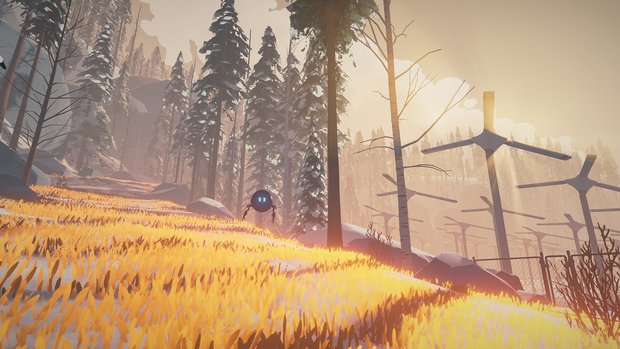
As you continue on your journey, you will come across many abandoned camps and research areas, but other than some vague references to climate change concerns, there is little to glean from what you see. Each one has locked doors or locked elevators, and the solution is almost always finding the right key card that was conveniently left behind. At times the puzzle is slightly more complex, such as determining the right buttons to push or finding an object to apply blunt force, but I was never stuck longer than ten minutes. Alfie will even offer occasional hints to ensure you keep moving along.
To provide a sense of realism, Arctic Awakening has hunger and stress daemons. As far as I can tell you cannot die, but if you are too hungry or too stressed, you lose the ability to run and your walking speed also seems to crater. Food and drink are practically everywhere, and as there is no inventory limit, you can stock up on water bottles and non-perishables that have been left behind by others. But when your stress level gets too high, you must take a break and do some simple on-screen breathing exercises to calm your nerves.
I’m not sure what triggers an increase in stress levels, though I noticed that if I took a break without pausing the game and came back fifteen minutes later, Kai was stressed out to the max. It’s kind of cool to have to manage your stress as one surely would need to when lost in the wilderness. But what baked my noodle is that you can only do deep breathing if you sit down next to a cairn. Telling me the only way to relax is to sit beside a pile of rocks kind of ruins the whole realism thing. That said, there are plenty of cairns out and about, so even though it’s annoying, it shouldn’t slow you down much. Progress is regularly auto-saved; while you cannot manually record your progress, you can copy an auto-save file into an empty slot any time you want, though there isn’t much actual danger to be concerned about, if any. There is perhaps one situation late in the game that could have had consequences, but I successfully sidestepped it.
Given the general lack of independence and puzzle-solving that is par for the course with walking simulators, having an engaging plot with strong voice acting is a must. Unfortunately, I found both areas to be uneven here. I was immediately unimpressed following the plane crash, when Kai’s calm voice belied whatever terror or stress he would naturally be feeling following a near-death experience. The conversations he has with Donovan also never quite feel real; the tenor of their exchanges are often like two strangers trying to navigate an awkward chance meeting, rather than two people who have known each other for years.
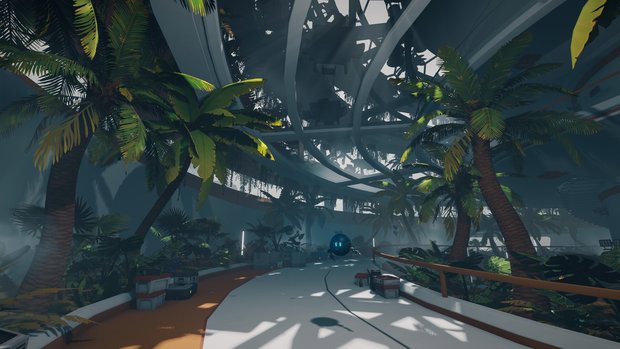
Kai’s relationship with Alfie is a bit more compelling. They’re naturally feeling each other out at the beginning, but as the plot progresses they begin to anticipate each other’s responses and at times their discussions are funny or touching. What bothered me is that Alfie is a mediocre therapist at best. Alfie occasionally shows sparks of empathy and reflective listening, yet more often he doles out unsolicited advice while occasionally sounding judgmental. One could argue he was just poorly programmed, but that doesn’t make him any more fun to be around. I almost always choose kind and considerate responses in choice-based conversations, but a few times I let Alfie have it because he was being a tool.
The story does pick up steam in the second chapter (of five) when you come across a camp belonging to two women who seem to have suffered a similar fate. In their case, they were scouting out the area, suspecting some dark government program was being conducted in the wilderness. As you peruse their writings and audio recordings, hearing their experience (as well as their conspiracy theories) certainly adds to the tension and the voice acting is superb.
I wish I could say this energy carried through the rest of the game, but there is a frustrating dearth of lore to discover through hours of trekking through camps and surprisingly advanced research facilities filled with giant machines and… no people? Clearly something is going on here—something BIG. But what? And what happened that left them all abandoned? The problem is that the game takes so long to offer any sort of answers to the intrigue that it’s hard to keep caring, and in some cases you’ll have already arrived at those conclusions yourself by then. You will come across dozens upon dozens of active computers, books, whiteboards and memos, and you can read almost none of them. Kai is not a scientist, but surely he could learn something from all the data lying around instead of remaining ignorant until the very end of the game.
As for Kai himself, we barely get to know him at all outside of the fact that he has a family and the court order somehow relates to them. Donovan occasionally talks about the war, but even then Kai only gives vague details about what happened there. This is in part due to him stubbornly refusing to talk to anyone about his feelings, but the game could have figured out other ways to give Kai a personable backstory. I was never rooting against Kai, because he seemed like a decent guy and all, but I wasn’t super invested in his fate either.
Nor did I ever really feel in awe while traversing the arctic landscape. All the highlights are here: mountains, snowdrifts, alternating weather patterns and the occasional sunbeam. You’ll walk around during the day and at night. But similarly to Firewatch, most everything—from the towering spruce trees to stalactite-filled caverns to the hi-tech lab equipment—is only moderately detailed and there are many background objects replicated hundreds of times over. While some of that is to be expected, both in an environment with lots of natural elements and in an indie adventure with budgetary constrictions, but for a game that touts its atmosphere I was hoping to at least feel more immersed in the Alaskan wilderness.
The soundtrack, on the other hand, does an excellent job at matching the mood of each scene, with seamless transitions between lighthearted and serious moments. With a combination of instruments ranging from piano to guitar, glockenspiel and synthesizer, the music does all it can to keep you invested in the moment.
Final Verdict
There are at least two endings to the game based on a monumental decision in the final few minutes. Frustratingly, the denouement is virtually the same either way, despite there being some extraordinary ramifications that would naturally follow depending on your choice. And that pretty much sums up my playing experience. There’s a lot to like in Arctic Awakening that is often followed by something disappointing. I still enjoyed my time with it insofar as it was a relaxing diversion—the hallmark of walking sims—so for those who love the genre I would not hesitate to recommend adding this to your library. For those seeking a better-rounded adventure, however, the undercooked story and lack of challenging gameplay are bound to leave them feeling left out in the cold.
Hot take
Fans of Firewatch are likely to enjoy this similarly designed walking simulator set in the northern wilderness, though Arctic Awakening’s story fails to bring enough tension or wonderment to match its acclaimed predecessor.
Pros
- Relaxing and intuitive gameplay
- Tangibly useless therapy bot is a fun idea
- Excellent minimalist soundtrack
Cons
- Main character could have been better developed
- Dearth of lore (or variety of obstacles) to maintain engagement
- Underwhelming ending
Beau played Arctic Awakening on PC using a review code provided by the game's publisher.


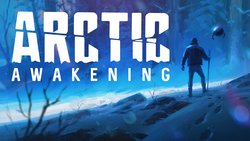








1 Comment
Want to join the discussion? Leave a comment as guest, sign in or register.
hope ai didn't write good review I like this games vibe bored in class reading it
Reply
Leave a comment